Guinea Pigs: A Minor History of Engineered Man is a research project of experimental history and immersive scholarship for the 3rd Istanbul Design Biennial, “Are We Human” curated by Beatriz Colomina and Mark Wigley.
The naturalist, in the nineteenth century, was not only a man skilled in careful observation and documentation of plants and organisms, but also a brave traveler whose physical endurance and fortitude magnified his given bodily capabilities. In many ways, the naturalist was then a heroic explorer determined to defeat his physiological boundaries and conquer uninhabitable lands.
His journeys were token of his commitment to advance the sciences and, by and large, our perception of what constitutes our world. In the twentieth century, the explorations of the naturalist resurged in the face of the astronaut and the aquanaut, who could now travel above and below the limits of the earth in regions prohibitive to man’s physiology. Outer space, the bottom of oceans, Antarctica – exceptionally unfriendly regions to the physiology of humans –were places for all that defied property and territorial commitment. In this vast, blank space, humanity had a second chance to reinvent itself from scratch.
In this context, an augmented and engineered type of man was of larger cultural interest, a new universal human subject, augmented through technological instrumentation. Unlike the Vitruvian Man, nevertheless, the figures of these engineered men were not idealizing a cosmic subject representative of humanity as a whole. The explorer of the twentieth century is a guinea pig, whose body is a test bed; he is a combustion machine, delegating human agency in measurements of input and output. Unlike the naturalist, the guinea pig resists utopia. It refutes the wholeness of the body, even ‘wholeness’ as a generic idea, and proposes in its place biotic components, in parts that can be replicated, interfaced and interconnected in endless ways.
Guinea Pigs presents five species of such engineered men: AMPHIBIAN MAN, EXOSKELETAL MAN, EXCREMENT MAN, FEEDBACK MAN and WEIGHTLESS MAN. A series of three-dimensional immersive projections narrate the stories of these figures, as fictional characters offset from the texture of reality; like the living ghosts of archival research. The five episodes bring together the imaginary of design culture at a given moment in time with the “raw” technical investment of engineering research and development.
In parallel, each Guinea Pig, is presented in narrative texts, archival material, and patent drawings suspended from the ceiling and observed from a designated station on the floor, enabling the visitor to lie down and assume a horizontal position in the exhibition space. The change of posture from vertical to horizontal turns the viewer him/herself into a guinea pig, into an object that is observed, monitored and documented by the curators.
Guinea Pigs are not merely speculations of human subjects, but also funded experiments to create superhuman abilities documented in manufactured prototypes, reports and patents. Either drawn or merely reproduced by architects and designers, these figures illustrate that the line between science fiction and social reality is an optical illusion.
Facts & Credits:
Project Title: Guinea Pigs: A Minor History of Engineered Man
Project Team: Chendru Starkloff, Royd Zhang, Mary Tieu LaFave, Ivan Leon, Ellen Wong
Animation: Emily Klein
Narrator: John Rhett Russo
Photographs: Chrysokona Mavrou and Petros Pattakos
3rd Istanbul Design Biennial, “Are We Human”
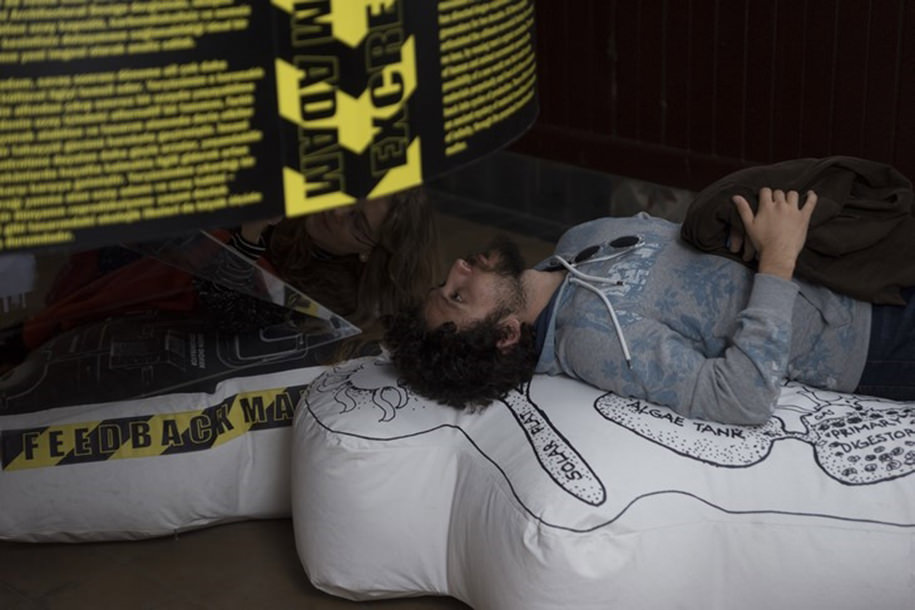
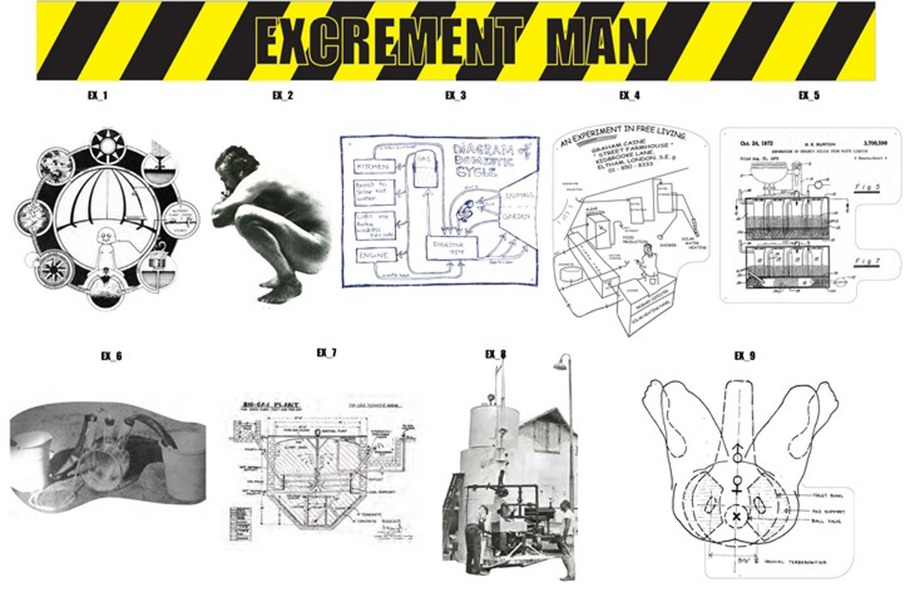
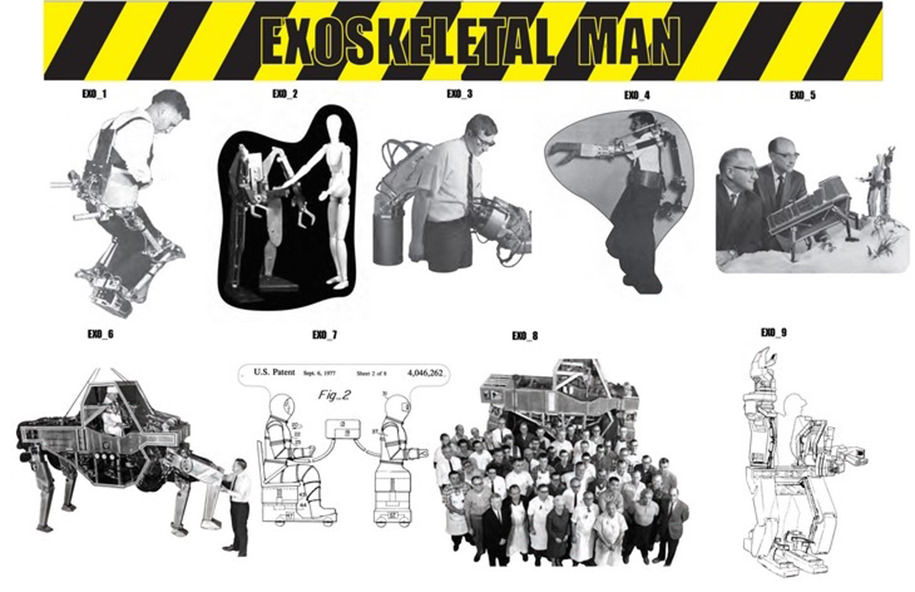
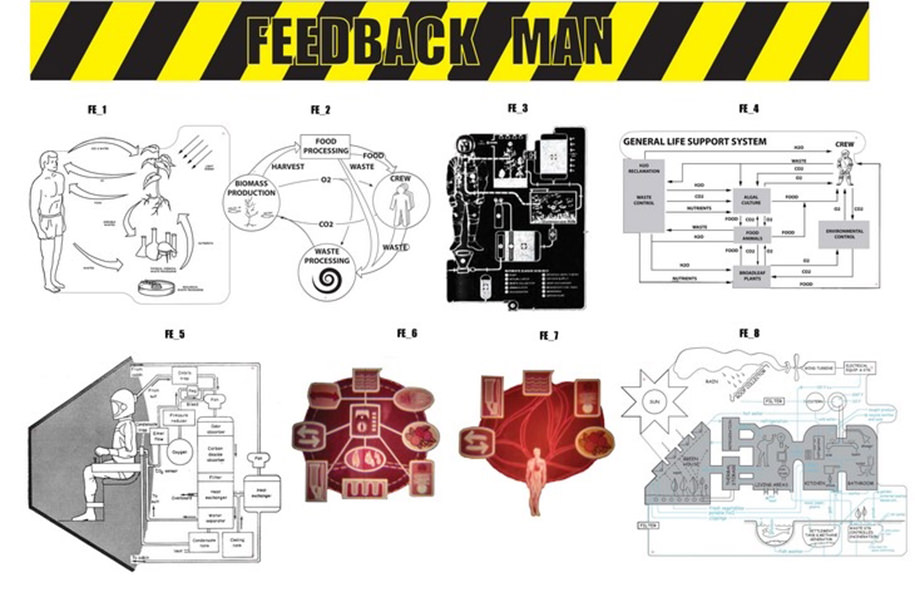
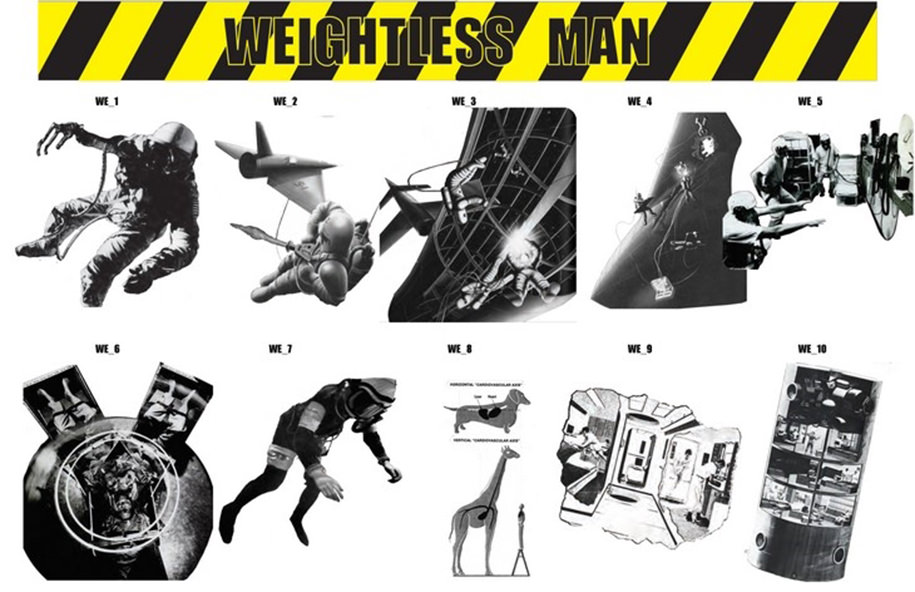
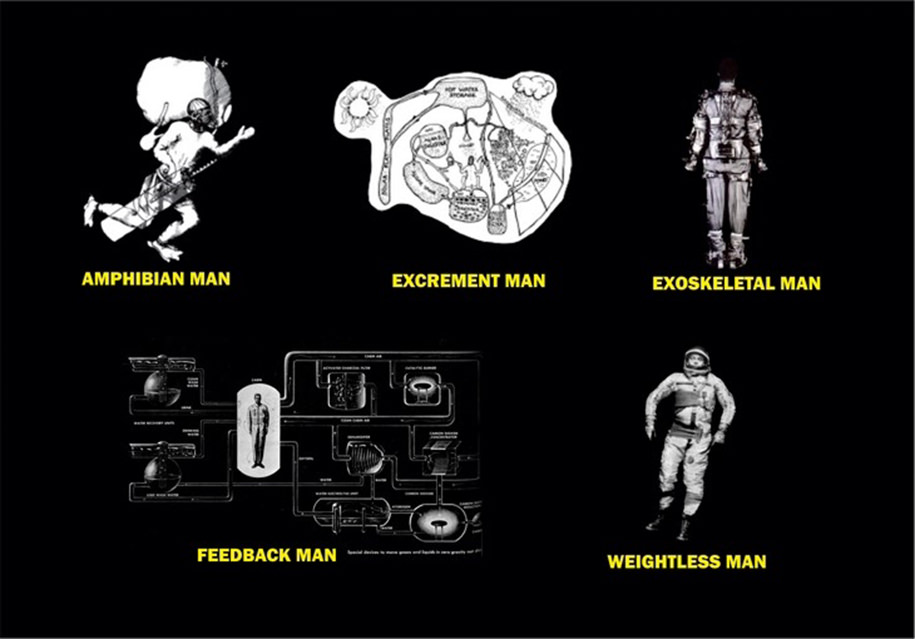
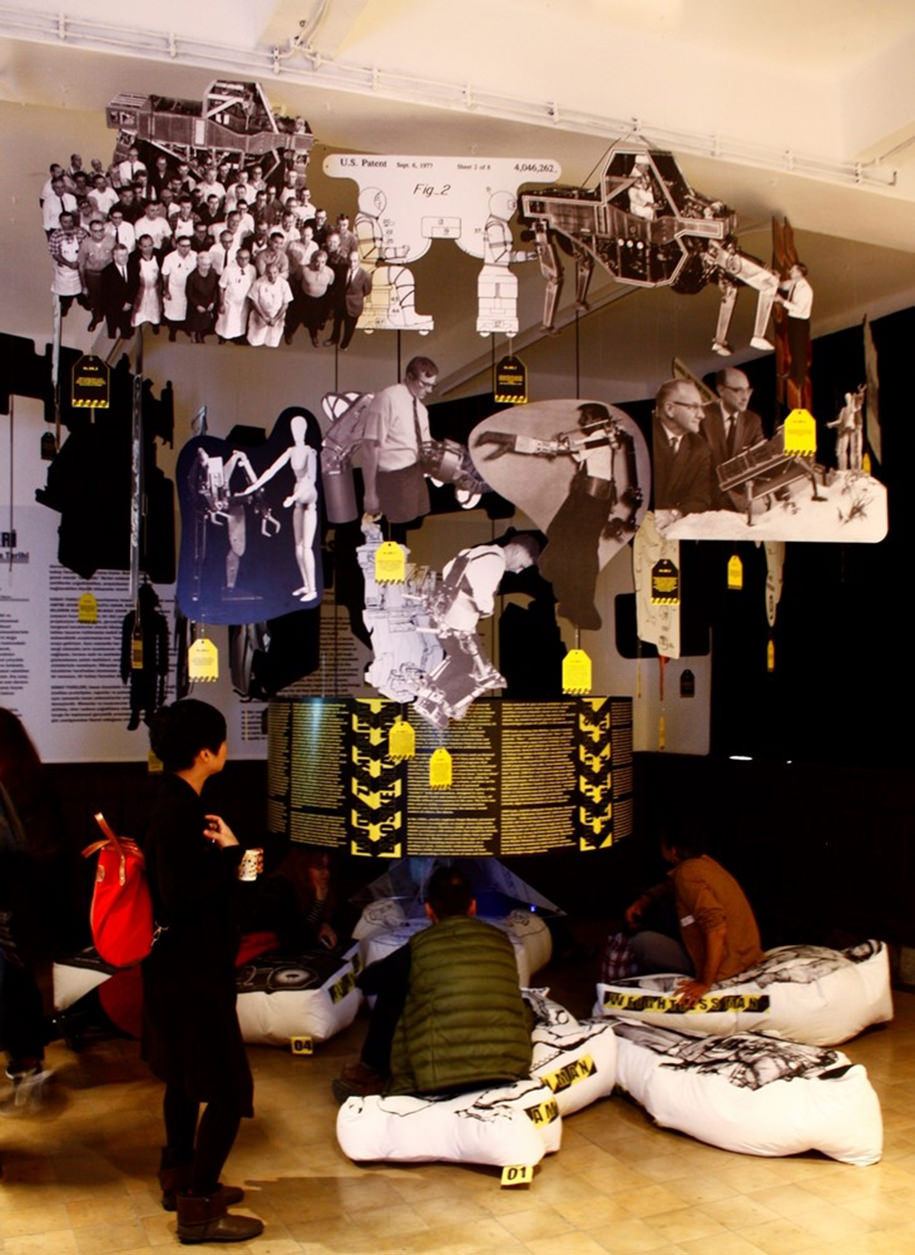
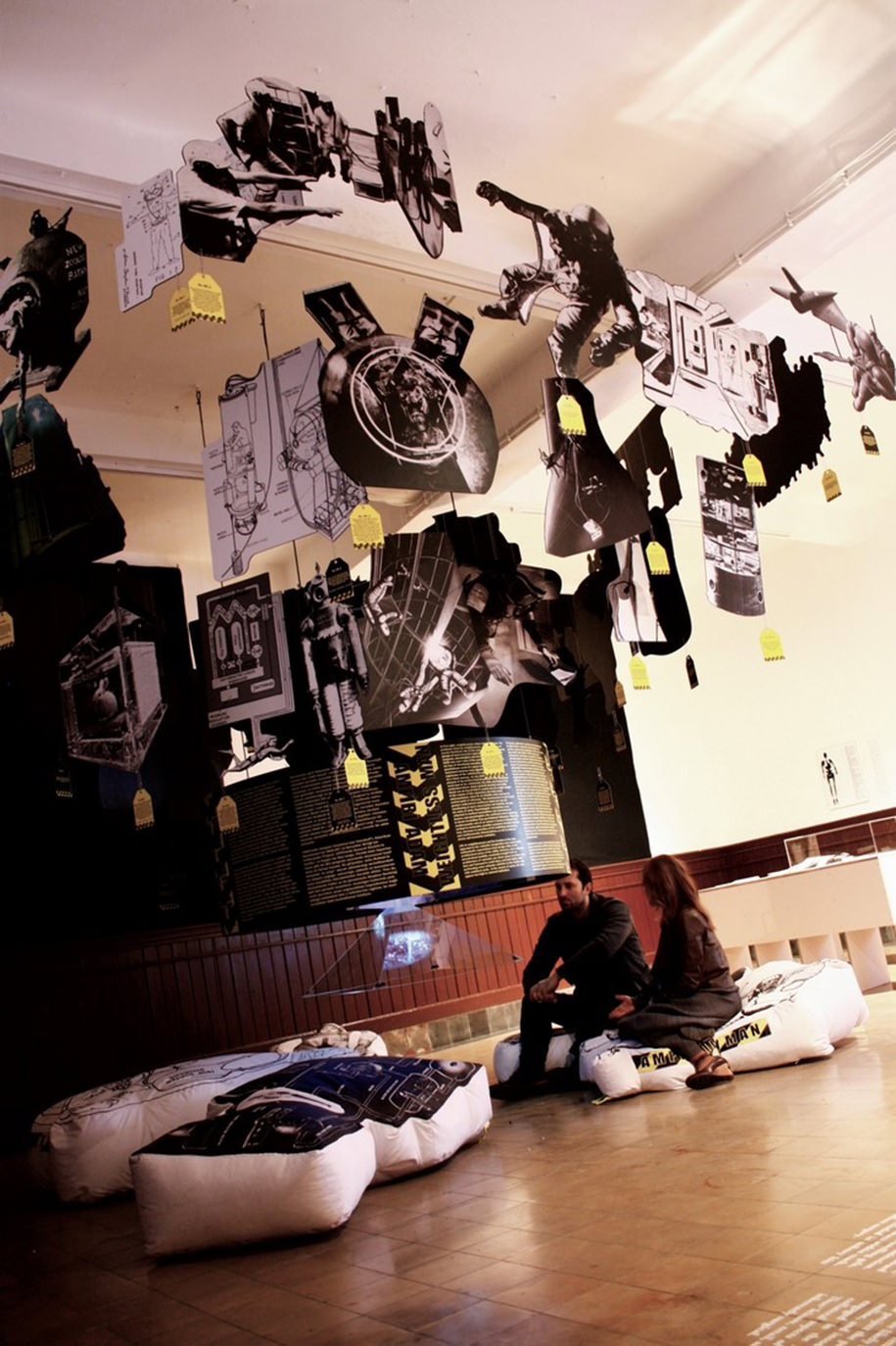
Text by the team
READ ALSO: Heptagon Series by Artpeckers Features 5 Lucky Charms for 2017